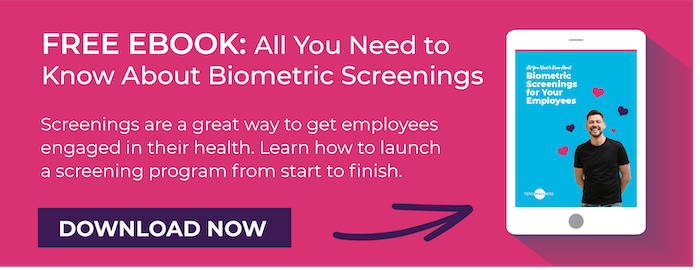 Employers are increasingly integrating outcome-based incentives into wellness programs. Outcome-based incentives differ from activity-based incentives in that they reward individuals based on actual results, such as reducing blood pressure levels, rather than incenting based solely on activities completed, such as participating in a monthly physical activity challenge.
Employers are increasingly integrating outcome-based incentives into wellness programs. Outcome-based incentives differ from activity-based incentives in that they reward individuals based on actual results, such as reducing blood pressure levels, rather than incenting based solely on activities completed, such as participating in a monthly physical activity challenge.
When designing an outcomes-based program, employers have to make decisions about the standards/factors their employees must meet to qualify for incentives. To further complicate things, the clinical guidelines and research regarding biometric risk factors continues to evolve over time.
Based on the latest research today, TotalWellness recommends using four basic biometric targets that can be modifiable by employees. These numbers can be captured with on-site biometric screenings.
Tobacco Use
Smoking status can be formally assessed via an affidavit or through tobacco testing. A cotinine test of the blood can be used to assess whether an individual has smoked. But remember there are always people looking for ways to "beat the system" in order to earn their incentive.
Recommended Health Factor: Not using tobacco products
Weight
Multiple studies have shown that being overweight or obese is associated with increased mortality. The risk for developing additional conditions like cancer, coronary heart disease, hypertension, stroke and sleep apnea also increases for obese employees.
The most popular way to measure weight for incentives is through BMI – which is derived from a formula that uses weight and height to estimate body fat and gauge health risks caused by carrying too much weight. Additional measurements could include waist circumference or body fat.
Recommended Health Factors:
BMI
Underweight: <18.5
Healthy: 18.5-24.9
Overweight: 25-29.9
Obese: 30+
Blood Pressure
High blood pressure, also called hypertension, makes the heart work harder. Over time, it damages the blood vessels that carry blood through the body.
Recommended Health Factors:
Healthy: <120/80 mm Hg
Moderate Risk: 120-139/80-89 mm Hg
High Risk: >140/90 mm Hg
Total Cholesterol
High cholesterol is one of the major controllable risk factors for coronary heart disease, heart attack and stroke. As an employee’s blood cholesterol rises, so does their risk of coronary heart disease.
Recommended Health Factors:
Healthy: <200
Moderate Risk: 200-239
High Risk: >240
In addition to the Total Cholesterol number, there are two other important cholesterol numbers:
Low-density lipoprotein (LDL)
LDL is the “bad” cholesterol. Over time, it builds up in the vessels that carry blood through the body. This build-up can block the flow of blood to the body.
High-density lipoprotein (HDL)
HDL is the “good” cholesterol. It clears “bad” cholesterol from the arteries.
Remember, for outcome-based programs, employers must also offer a reasonable standard alternative to people who face difficulties meeting standards based on existing medical conditions.



